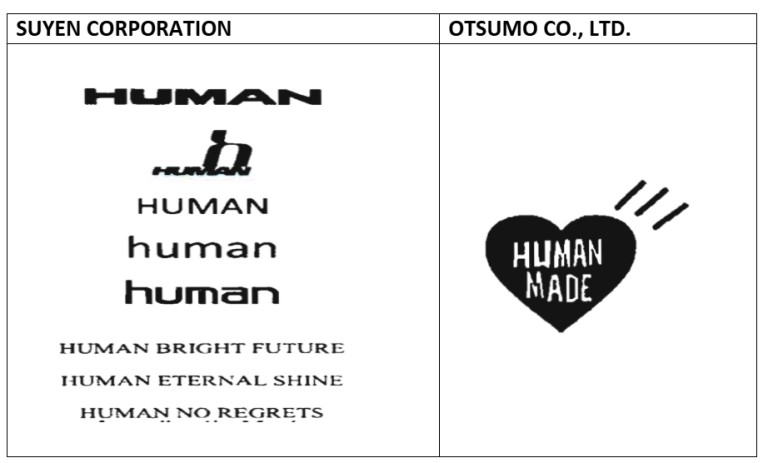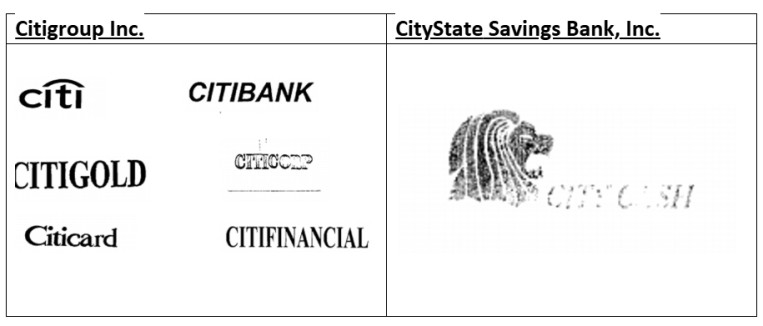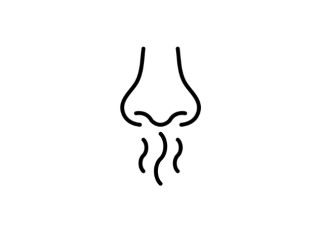Application of the dominancy test
23 January 2025

On November 26, 2024, the Office of the Director General (ODG) of the Intellectual Property Office of the Philippines (IPOPHL) in the appealed case entitled Suyen Corporation v. Otsumo Co., Ltd. (Appeal No. 14-2023-0009), ruling in favour of Otsumo with a finding of no confusing similarity in the marks of the parties, shown below:

Suyen Corporation is a Philippine conglomerate most known for its clothing brand Bench, its flagship, and other clothing brands like Human and Kashieca. Otsumo Co., Ltd. is a Japanese company established in 2016 behind the lifestyle brand Human Made and changed its name to Human Made, Inc. on May 5, 2024.
Are the marks Human and Human Made confusingly similar? At the first level of the opposition proceedings, the adjudication officer (AO) ruled that the “use of the word ‘human’ compounded with another word ‘made’ enclosed in a heart logo with three slanted lines does not make Otsumo’s mark distinctive as a purchaser may perceive it as ‘made by human.’” On appeal, the director of the Bureau of Legal Affairs (BLA) reversed the AO’s decision and held that “while there is use of the common element ‘human,’ such common element does not automatically lead to a finding of confusing similarity since there is considerable difference as to how the marks are depicted.” He also said that the trademark registry shows that there are other registered marks using the word “human.”
Dissatisfied with the BLA’s decision, Suyen appealed to the ODG, claiming that the dominant element “Human” of Otsumo’s mark cannot be ignored and that the addition of the word “Made” does not provide sufficient distinction and creates more confusion as to the source or origin of the goods. Otsumo countered that the BLA director correctly applied the dominancy test in the determination of confusing similarity, alleging that the dominant element is the whole word mark Human Made since it is the first prominent feature that captures the attention of the relevant consumer; that there is a wide disparity in the prices of the goods; that the target markets are different; and that Suyen cannot exclusively claim the word human.
The ODG decision: The ODG affirmed the decision of the BLA director and ruled that the main or dominant element of Otsumo’s mark is Human Made and not merely the single element “human.” The ODG emphasized, quoting the decision in the Mighty Corporation v. E. J. Gallo Winery case, that a very important circumstance is the likelihood that “an appreciable number of ordinarily prudent purchasers will be misled or simply confused as to the source of the goods…” Accepting the argument of Otsumo, the ODG stated that the wide disparity in the prices of the goods bearing the contending marks would make it unlikely for the consumers who are more “selective and discriminating in purchasing a piece of clothing, bag or accessory costing thousands of pesos and is therefore unlikely to be confused with another brand,” and that “the big price difference is a sufficient indicator that they are in fact unconnected.” The ODG also stated that Otsumo’s merchandise can only be purchased through two local retailers, Hoodwink and Commonwealth, while Suyen’s goods can be purchased through multiple chains of Human clothing stores and are available nationwide.
The dominancy test: The above decision of the ODG brings another dimension to the application of the dominancy test in finding confusing similarities between competing marks. Before 2021, there were two tests for determining confusing similarity: the dominancy test and the holistic test. While the dominancy test is expressly provided in the IP Code, practitioners and the courts applied both tests. However, the Supreme Court in the case of Kolin Electronics v. Kolin Philippines International, Inc. (G.R. No. 228165. February 9, 2021) made it crystal clear that in determining the resemblance of marks, it is the dominancy test which is prescribed by law that is the sole test and made it clear that the holistic test has been abandoned.
While there are no set rules as to what constitutes a dominant feature with respect to trademarks applied for registration, usually, what is taken into account are signs, colour, design, peculiar shape or name, or some easily remembered earmarks of the brand that readily attract and catch the attention of the ordinary consumer. What is considered the dominant feature of the mark is the first word or figure that catches the eyes or that part which appears prominently to the eyes and ears (Seri Somboonsakdikul v. Orlane, SA, G.R. 188996, February 1, 2017).
The dominancy test focuses on the prevalent features of the competing trademarks that might cause confusion. Courts give greater weight to the similarity of the appearance of the product arising from the adoption of the dominant features of the registered mark, disregarding minor differences. Courts will consider more the aural and visual impressions created by the marks in the mind of the public, giving little weight to factors like prices, quality, sales outlets and market segments. (McDonald’s Corporation v. L.C. Big Mac Burger, Inc., G.R. No. 143993, August 18, 2004; Dermaline Inc. v. Myra Pharmaceuticals Inc., G.R. No. 190065, August 16, 2010).
Word mark v. device: In the case of UFC Philippines, Inc. v. Barrio Fiesta Manufacturing Corporation (G.R. No. 198889, January 20, 2016) the court agreed with the IPOPHL that the word “Papa” (trademark of UFC for banana ketchup) is the dominant feature of respondent Barrio Fiesta Corporation’s mark Papa Boy & Device (for “lechon” sauce), and that it is said a word which a purchaser recalls and not the smiling hog. The word “Papa” is written on top of and before the other words such that it is the first word or figure that catches the eyes, and the goods are closely related.

Device v. word mark: In the case of Citigroup, Inc. v. CityState Savings Bank, Inc. (G.R. No. 205409, June 13, 2018), the Supreme Court agreed with the IPOPHL that the Lion device of CityState’s trademark “Citicash with Golden Lion’s Head” is the dominant element of the latter’s trademark, to wit:

The services covered by both marks include ATM services. CityState adopted the national symbol of Singapore, the merlion which made it unlikely for the ordinary purchaser to be confused. The IPOPHL noted that availing of the products and services related to the parties’ marks would entail very detailed procedures, like sales representatives explaining the products and clients filling up and submitting application forms, such that customers would necessarily be well informed and not confused.
Conclusion: The dominancy test is the test to be applied in determining the confusing similarity of marks. Central to the application of this test is the determination of what catches the attention of the ordinary consumer, and unless the parties could submit some kind of top-of-the-mind trademark survey, which could be expensive to secure, it is the practitioner’s research and argumentation that could save the day for either party.








